AllSky View taken with ZWO ASI178MC colour camera
(170 deg, 2.5mm lens)
30s exposure with medium gain, single frame
Glare at bottom is from Moon lying just out of frame.
North is on righthand side
For AllSky use it would be preferrable
if the lens produced a smaller image on the 7.4 x 5.0mm
IMX178 chip
in order to capture the view down to near the horizon at the top and
bottom of the image
The chip has plenty of pixels (3096 x 2080) to
still preserve good resolution of the sky compared to the Oculus camera.
It's not clear if the ZWO accessory lens could be moved to a position
that could give a smaller image, but still be focussed at ~ infinity |
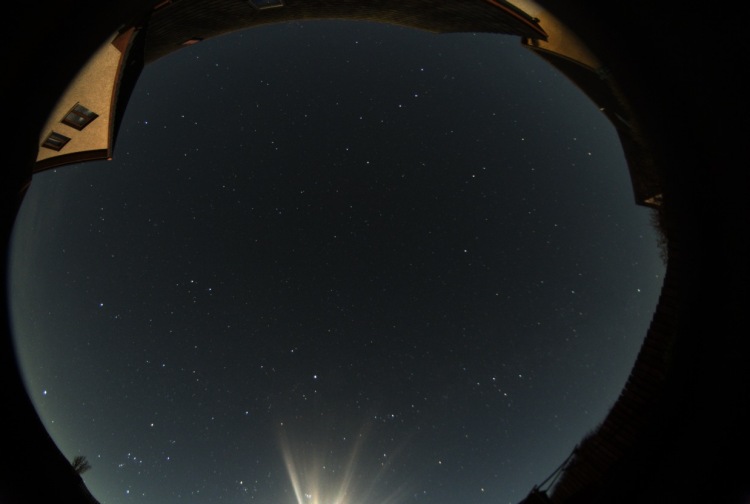 |
CMOS Colour Image (25% size, 3096 x 2080
original)
30s exposure , gain 250, 1x1 binning, RGB24
2017-01-08
01:03hUT
[Larger
Image, 40% size] [
Full Size
Image ]
Larger & full size images show that stars are well
focused on the left and centre of image,
but are more poorly focussed or
deformed on right hand side (lens quality issue?) |
| |
Equivalent view through with Oculus AllSky Camera (180 deg lens)
Taken at same time as above image, site offset by 15m distance and 3m in
height |
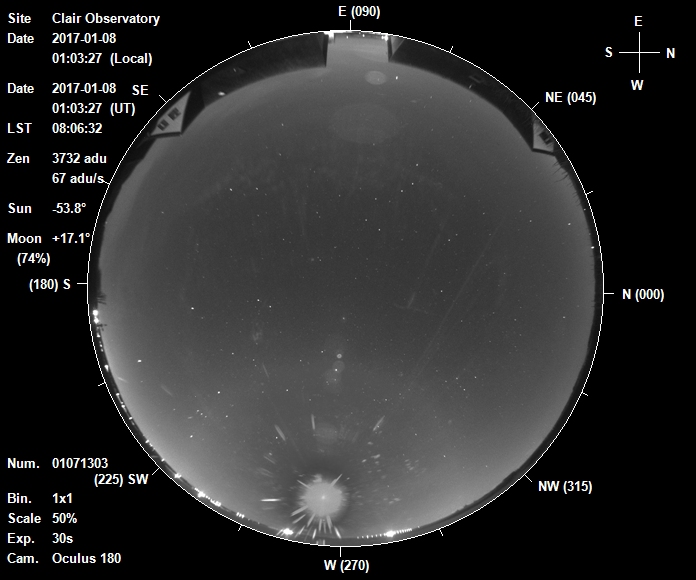 |
B/W Image (50% size, 1392 x 1040 original)
30s exposure , gain
250, 1x1 binning, RGB24
2017-01-08 01:03hUT
[
Larger image 75%
size, showing Annotated Stars] |
| |
| Examples of detail in AllSky View taken with ZWO
ASI178MC colour camera |
| Orion |
|
Plough |
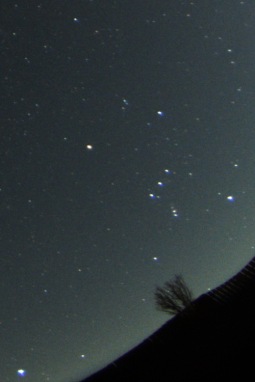 |
|
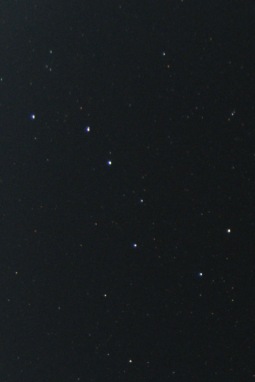 |
| [
Original size ] |
|
[
Original size ] |
| |
|
|
| Polaris |
|
Perseus & Cassiopeia |
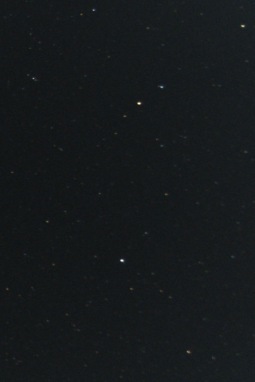 |
|
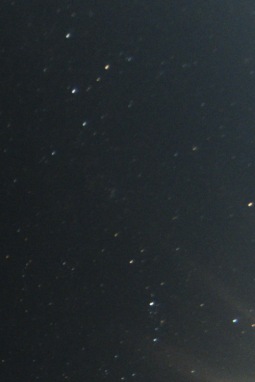 |
| [
Original size ] |
|
[
Original size ] |
| |
2.5mm, 170 deg FOV, 'all sky' lens supplied
with
the ZWO ASI178MC Camera |
 |
| |
AllSky View taken with ZWO ASI178MC colour camera
(170 deg, 2.5mm lens)
Image produced in SharpCap using Live Stack
facility
Rotation of stars around North Celestial Pole is
clearly demonstrated in this image which stacks 21 x 30s exposures
(10.5 minutes total exposure). The bright star at the centre of
rotation is of course Polaris.
Note: Averaging of frames in
Live Stack's stacking process reduces background noise
but also
reduces the intensity of trailed stars, with intensity dropping off as
more and more frames are collected.
Ideally like to have option to
show max pixel value rather than average. |
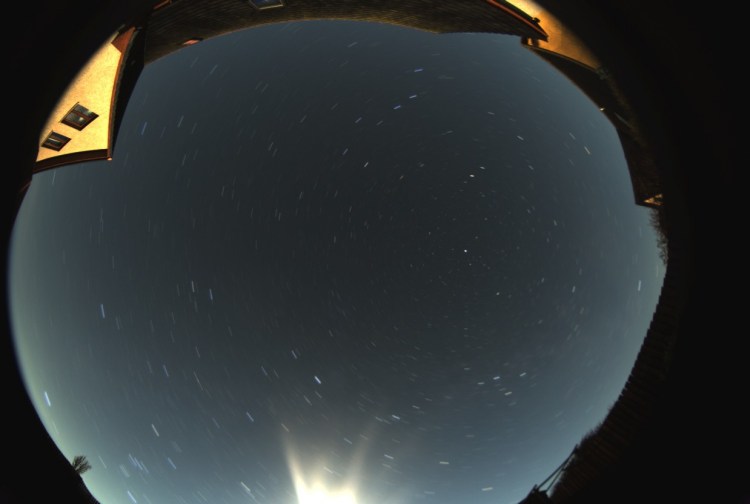 |
CMOS Colour Image (25% size, 3096 x 2080
original)
21 x 30s exposure, gain 250, 1x1 binning, RGB24
2017-01-08
01:03 to 01:13hUT
[Larger
Image, 40% size] |
| |
AllSky View taken with ZWO ASI178MC colour camera
(170 deg, 2.5mm lens)
Image produced live in SharpCap using Live
Stack facility with Align Star option enabled
Stacks 20 x 30s
exposures, 10 minutes total exposure)
Note:
With realtime alignment of stars (including image rotation), the
intensity of stars is increased
whilst background noise is reduced.
Houses, trees, fences are necessarily blurred by the align and stack
process.
Possibly due to the fish-eye nature of the lens and lens
?quality issues on right hand side, stars are not as point like as one
would like.
However the potential of this technique for taking Deep
Sky Images using a longer focal length lenses or telescopes is clear.
Might be quite good for recording multiple meteors (though their
brightness might be diminished by frame averaging)
Ideally like to
have option to show max pixel value rather than average. |
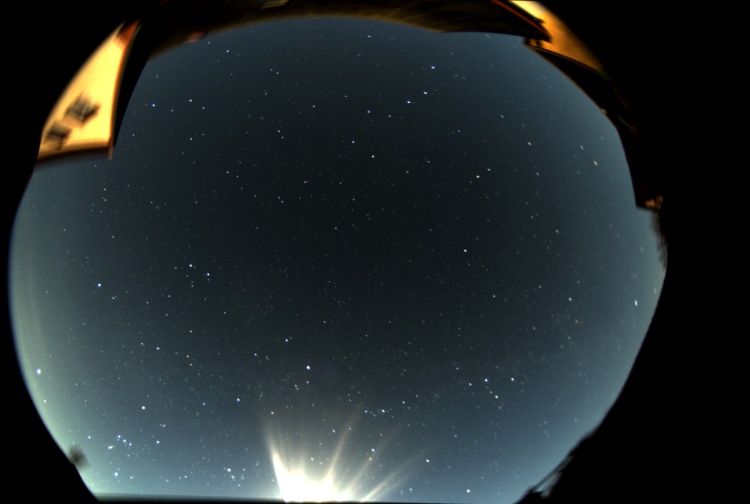 |
CMOS Colour Image (25% size, 3096 x 2080
original)
20 x 30s exposure, gain 250, 1x1 binning, RGB24
2017-01-08
00:48 to 00:57hUT
[Larger
Image, 40% size] |
| |
Detailed view of Perseus, Cassiopeia and Andromeda
region in above Image
Image produced live in SharpCap using Live
Stack facility with Align Star option enabled
Stacks 20 x 30s
exposures, 10 minutes total exposure)
2.5mm all-sky lens + ZWO
ASI178MC on a tripod with no tracking |
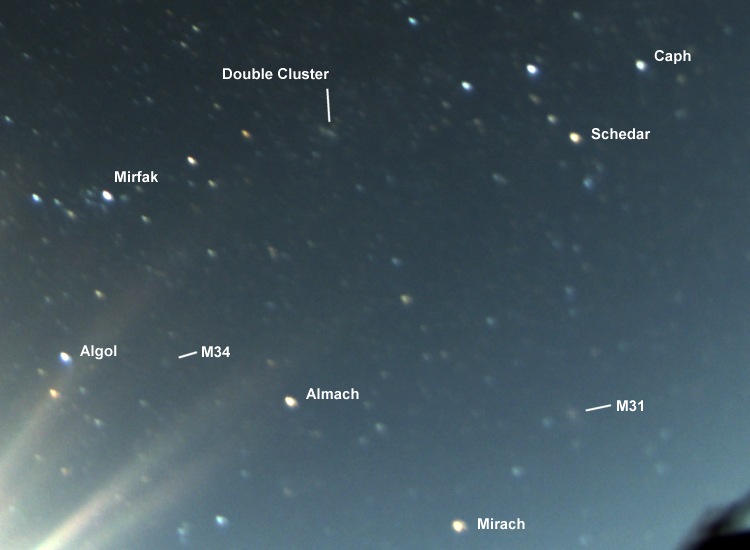 |
CMOS Colour Image (100% size of cropped
region from 3096 x 2080
original)
Image details as above
|
| |
AllSky View taken with ZWO ASI178MC colour camera
(170 deg, 2.5mm lens)
5s exposure with higher gain, single frame
Note: Noise levels are clearly higher in this 5s image, compared
to the 30s images above. |
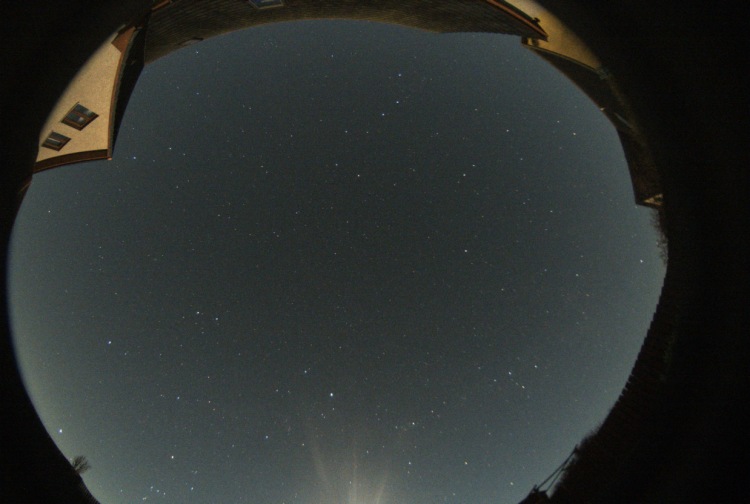 |
CMOS Colour Image (40% size, 3096 x 2080
original)
5s exposure, gain 400, 1x1 binning, RGB24
2017-01-08 01:34hUT
[Larger
Image, 40% size] |
| |











